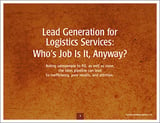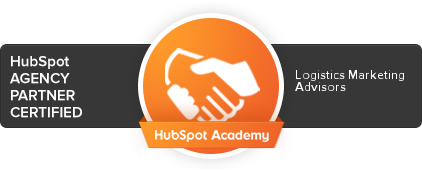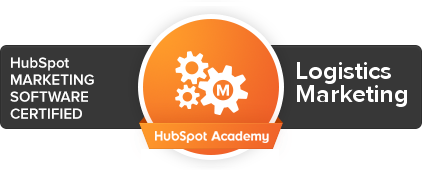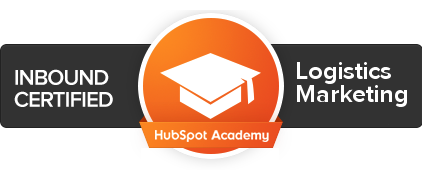In my younger days, I spent many a night in a particular Irish tavern in the Bronx, NY.
Good friends. Good fun. Good beer. And a few things you’d see in most taverns – a pool table, a dart board and, over in the corner, a pinball machine.
 I didn’t mess with the pinball machine much because it required money I didn’t have and I was terrible at it. No matter how hard I tried to keep that little silver ball bouncing around at the top of the machine, it invariably dropped right down the center and into the hole.
I didn’t mess with the pinball machine much because it required money I didn’t have and I was terrible at it. No matter how hard I tried to keep that little silver ball bouncing around at the top of the machine, it invariably dropped right down the center and into the hole.
Four more quarters, please.
In pinball, the longer the game lasts the better. As you keep the ball in play at the top of the machine, you earn points.
When it comes to selling and marketing logistics services and equipment, we don’t think that way. We begin assigning “points” to prospects only after they engage with sales and we can include them on some sort of sales report. We don’t spend enough time and money at the top of the sales funnel – on lead nurturing of early stage prospects who are not yet ready to buy.
But here’s the problem with that thinking. Most companies who are researching potential solutions aren’t ready to buy. Yet.
Nurturing is Key to Marketing Logistics Services
During the early stages of a logistics sales cycle, a good portion of the shipper’s time is spent defining needs and doing research – things that happen prior to sales involvement. That’s the point where marketing logistics services is so critical. We need to keep these early stage prospects engaged. We need to keep them bouncing around the top of the pinball machine so that, when they are ready, they are more inclined to seek a dialogue with our company.
Consider this approach:
- Maximize the number of early stage prospects by sharing your expertise. Far more people are out there looking to get smarter than are looking to engage with logistics sales people. So stop selling and start educating. That means building a solid logistics content marketing program to attract leads.
- TOP OF THE FUNNEL: Once a prospect has downloaded one of your content pieces, continue to share helpful information. Send them relevant blog posts, articles and videos (based on the piece they downloaded) that make them smarter and make them think. In the process, you are positioning your company as an expert. As part of this communication (all of which can be automated), give them the option of learning more about your company’s products and services.
- MIDDLE OF THE FUNNEL: Once a prospect downloads your branded content, begin to position your company as a viable partner. If they have accessed your branded content, you can assume that they are actively considering partners. So share case studies, implementation guides and other information that offers proof of your capabilities and moves them from the research stage to active consideration of your company. As part of these automated and personalized communications, give prospects the option of engaging with your sales team.
- BOTTOM OF THE FUNNEL: Once a prospect has requested a sales meeting, or met other criteria you’ve established for “sales ready” leads, sales can engage.
In our metaphorical game of pinball, logistics marketers have good “launchers” that get prospects into the sales funnel. But we can lose interest when they’re not ready to buy.
When marketing logistics services, we need to get better at keeping early-stage prospects engaged, and even intrigued, by our company. We can do this by feeding their need for information and their desire to make the smart choice.
Free eBook:
 Lead Generation for Logistics Services: Who's Job Is It, Anyway?
Lead Generation for Logistics Services: Who's Job Is It, Anyway?
During a phone discussion on marketing with the senior executive of a large, warehouse-based logistics firm, I shared my perspective that many such companies make salespeople work too hard to unearth sales opportunities. After a brief silence, the executive said, tersely, “That’s what I pay them for.”
Download the eBook







